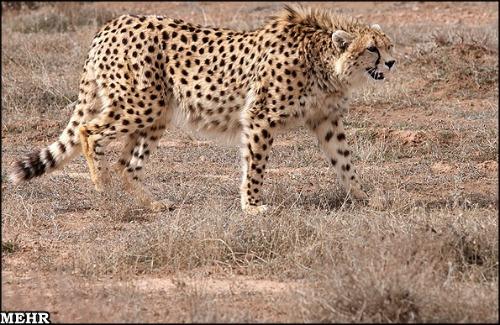Asiatic Cheetahs Acinonyx jubatus venaticus once ranged over the grasslands of India, Pakistan, Russia, Iran and the Middle East.
The cats have been nearly wiped out by excessive hunting, habitat degradation and scarcity of prey species that were hunted to near extinction by man. There have been no sightings in Afghanistan since the 1950’s, and a 2001 survey in Pakistan found no sign of the big cats. They used to wander from Iran to Turkmenistan but construction of a border fence has made this natural migration more difficult.
The Iranian Cheetah has a smaller head than their African cousins. Their legs are shorter, their coat thicker and their neck is more powerful.
The last wild Asiatic Cheetahs in Iran are now thought to number between 70-110 individuals, all occupying the remote and arid central plateau. Iran considers their Cheetah an important part of its natural and cultural heritage and it has now become a symbol of the country’s conservation efforts. Iran’s Department of the Environment (DOE) partnered with various other groups including the Wildlife Conservation Society and the United Nations Development Program to create a comprehensive conservation program.
Through this project, researchers are protecting the last remaining Iranian Cheetahs, their prey base and their natural habitats by mitigating direct threats facing Cheetahs and their prey; gathering ecological data; enhancing and empowering law enforcement officials; utilizing camera traps and radio-collars to collect critical data on the ecology of Cheetahs; and working with local communities to improve attitudes towards the cats.
See the Iranian Cheetah Society for more information.


18 Responses